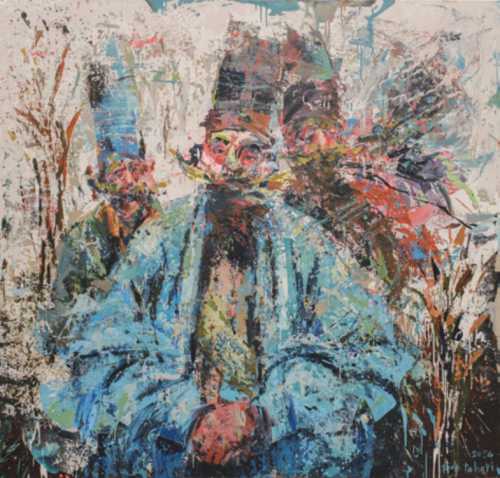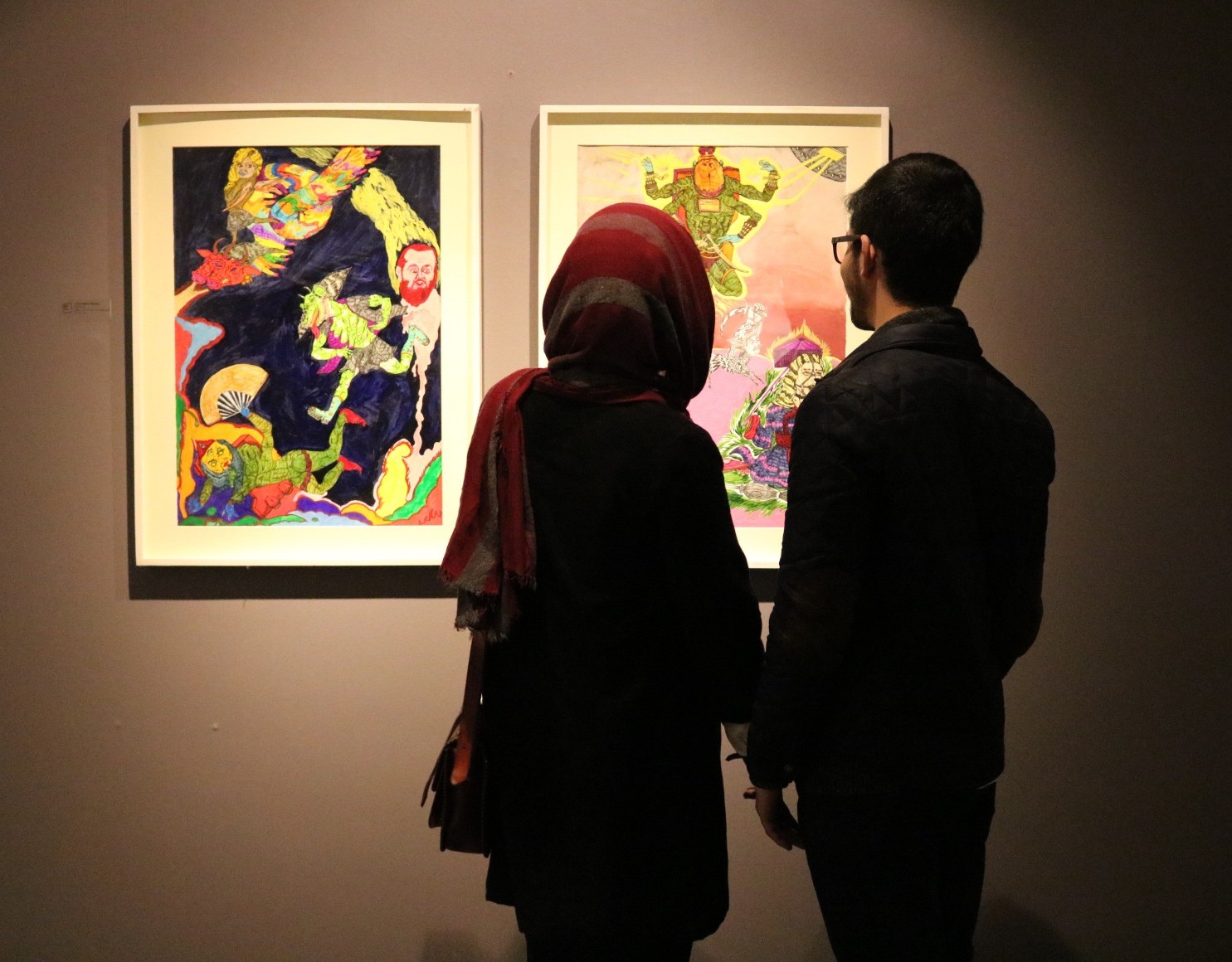About Hossein Shahtaheri
Hossein Shahtaheri is known for his semi-impressionist paintings of Qajar court scenes. This contemporary painter was born in Tehran and started painting in 1996. In addition to painting, he has been active in decor design, installation, and restoration of paintings and photography.
In 2000, this artist designed the Museum of Anthropology of Hamedan Province (Lotfalian House), and in 2002 he created an installation for the Bam earthquake memorial. His second installation experience took place in Tehran's Laleh Park in 2005. He received a bachelor's degree in painting from the Soureh University of Shiraz in 2007, and in 2008, he presented an article and lecture at a conference on the Shiraz school. His designs were displayed in a group exhibition at the Imam Ali Museum in Tehran the following year. In 2010, he again participated in a group exhibition with his sculptures in the same museum. The same year, he started collaborating with Malek National Museum in the documentary and photography department. The activity and experience of working with historical works led to a more detailed investigation and more attention to the history of Iranian art. Finally, the first solo exhibition of this artist was held in Tehran Gallery 26 in 2015.
Shahtaheri shapes his collection of works with influence from the historical artworks of different periods, such as Qajar, Safavid, or Zandiyeh, and examines the culture of people in the past and present. Like many trends in contemporary Iranian art, it goes to the court photos of the Qajar era. His work style in drawing court associations is closest to the impressionist style. He gets a blurred and vague reflection of his subjects with spaced taches that sit on the canvas, mainly using a painting knife. This method for impressionist painters was connected with the experience of the French painter in understanding and meeting the daily and transitory affairs of urban life; in Shahtaheri's works, it is somehow related to the issue of memory and the mechanisms of remembering the past.
He deconstructs the mechanism of memory. In this way, he takes photos of the Qajar period, and by creating ambiguity and discontinuity between the constituent particles of these images, he pours them in the form of discrete and porous spots like dumb and vague memories, Ghosts of history. Visiting these paintings is an experience similar to summoning the scattered and elusive particles of the past and the constant effort of the mind to connect these components and reach a coherent, clear, and definite image. An attempt that is always doomed to failure. An echo of this sentence from the movie "Sunless" by Chris Marker: "We don't remember, we rewrite memory, as history is written."
In a conversation, Shahtahari spoke of his deep interest in the "limbo between photographed images and the Qajar period paintings" and his feeling of closeness and kinship with these images' characters: "It is as if a reality remains between what was and what was depicted. With a great distance from both." It is as if by creating a distance between the continuous elements of Qajar's photos and turning them into separate spots, he is walking in the spaces between the spots and in the breath of the "distance" that he has emphasized in his words.
He deconstructs the mechanism of memory. In this way, he takes photos of the Qajar period, and by creating ambiguity and discontinuity between the constituent particles of these images, he pours them in the form of discrete and porous spots like dumb and vague memories, Ghosts of history. Visiting these paintings is an experience similar to summoning the scattered and elusive particles of the past and the constant effort of the mind to connect these components and reach a coherent, clear, and definite image. An attempt that is always doomed to failure. An echo of this sentence from the movie "Sunless" by Chris Marker: "We don't remember, we rewrite memory, as history is written."
In a conversation, Shahtahari spoke of his deep interest in the "limbo between photographed images and the Qajar period paintings" and his feeling of closeness and kinship with these images' characters: "It is as if a reality remains between what was and what was depicted. With a great distance from both." It is as if by creating a distance between the continuous elements of Qajar's photos and turning them into separate spots, he is walking in the spaces between the spots and in the breath of the "distance" that he has emphasized in his words.
The Most Expensive Artwork
At Auctions
First Attendance
17 January 2020
# Attendance
7
# Artworks
7
Average Realized Price
9,149 USD
Average Min Estimate
4,023 USD
Average Max Estimate
5,730 USD
Sell-through Rate
100%
Average Growth of Artwork Worth
98.993%
Timeline
The 24th Tehran - Contemporary Iranian Art auction
3 October
The 20th Tehran- Modern and Contemporary Iranian Art auction
5 July
10s of Artworks, 10s of Millions exhibition
8 March
The 18th Tehran Contemporary Art auction
12 December
Process exhibition
10 November
A Selection of 70 Years of Iranian Sculpture exhibition
4 August
Recovery/ The third series exhibition
10 March
Tehran- 16th- Iranian contemporary art auction
1 July
XL exhibition
20 May
The 14th Tehran- Contemporary Iranian Art auction
12 August
The 13th Tehran- Modern and Contemporary Iranian Art auction
15 January
دوازدهمین دوره حراج تهران auction
17 January
Mashghe Zehn exhibition
2 November
Its Not a Collection #3 exhibition
5 October
Articles
Montakhab-e Nasl-E-No Annual Art Call; From Montakhab to Auctions 25 September 2023
The 13th Annual Montakhab-e Nasl-E-No started its work on July 21, 2023 with the presentation of 44 artists. Annual Montakhabe Nasl-E-No and other open calls in Iran, such as Khor Art Initiative, in the absence of art biennials in the Iranian art scene, consider their duty to discover new talents and monitor what is happening among new generation. Although the effects of these types...

